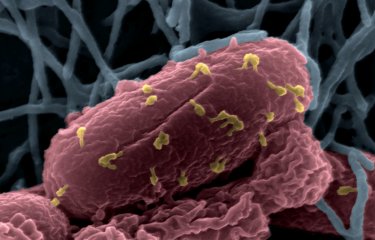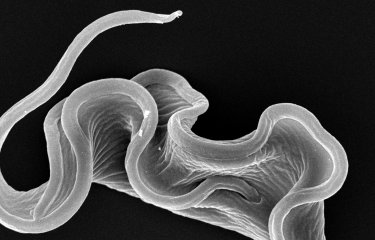Little information is available on how stem cells acquire their special properties. A team from the Institut Pasteur has described a signalling pathway (Notch/COLV/CALCR) that proposes a new view on how muscle stem cells are retained in their local microenvironment (niche).
Stem cells play critical roles during growth, regeneration and ageing. Although they possess special features that allow them to self-renew and give rise to differentiating daughter cells, how external and internal cues interplay to confer these special properties to stem cells remains largely unexplored. The local microenvironment (niche) is an essential regulator of stem cell behaviour and it can be of cellular and non-cellular nature.
Examining the local microenvironment to understand the biology of stem cells
This is also the case for skeletal muscles where the stem cell population is quiescent (not producing daughter cells) for extended periods. These cells are then prompted to divide following injury to regenerate damaged muscle fibres. To better understand the biology of stem cells and maximize their potential for regenerative medicine it is crucial to define the composition of the niche and the nature of its interactions with the stem cells.
Previously, the group showed that Notch signalling acts as a potent regulator of muscle stem cell quiescence, where disruption of this pathway results in depletion of muscle stem cells. Collagens are present in a variety of forms and they constitute key components of the extracellular matrix. In the present study, the group identified one type of collagen (Collagen type V, COLV) that is produced by the muscle stem cells themselves and that is essential for maintaining muscle stem cell quiescence. COLV in turn is controlled by Notch activity.
A protein secreted by the stem cells maintaining the population
So how does COLV maintain the stem cell pool? After much exploration, the path lead to the G-protein coupled receptor CALCR (Calcitonin receptor), another regulator of muscle stem cell quiescence that was identified previously. However, the natural ligand for CALCR is produced by the parathyroid, and it circulates in the body. Does this mean that muscle stem cells that are distributed in different muscle masses are kept quiescent by a circulating hormone? The researchers addressed this enigma by showing that COLV acts as a local ligand for CALCR, thereby questioning the role of circulating calcitonin in maintaining the muscle stem cell population.
In summary, the Notch/COLV/CALCR signalling pathway described in this study proposes a new view on how stem cells are maintained in their niche. An extracellular matrix protein secreted by the stem cells plays the unusual role of acting as a signalling molecule to prevent the depletion of the stem cell population. Given that neural and intestinal, and perhaps other stem cells, are maintained by Notch signalling, it is possible that this model would be widely applicable to stem cells located in other tissues and organs.
Source
Reciprocal signalling by Notch–Collagen V–CALCR retains muscle stem cells in their niche, Nature, May 23, 2018.
Meryem B. Baghdadi, David Castel, Léo Machado, So-ichiro Fukada, David E. Birk, Frederic Relaix, Shahragim Tajbakhsh & Philippos Mourikis
1. Department of Developmental & Stem Cell Biology, Institut Pasteur, Paris, France.
2. CNRS UMR 3738, Institut Pasteur, Paris, France.
3. Sorbonne Universités, UPMC, University of Paris 06, Paris, France.
4. UMR8203, CNRS, Gustave Roussy, Université Paris-Sud, Université Paris-Saclay, Villejuif, France.
5. Département de Cancérologie de l’Enfant et de l’Adolescent, Gustave Roussy, Université Paris-Sud, Université Paris-Saclay, Villejuif, France.
6. INSERM IMRB U955-E10, UPEC, ENVA, EFS, Créteil, France.
7. Laboratory of Molecular and Cellular Physiology, Graduate School of Pharmaceutical Sciences, Osaka University, Osaka, Japan.
8. Department of Molecular Pharmacology & Physiology, University of South Florida Morsani College of Medicine, Tampa, FL, USA.

From molecular biology to stem cells





